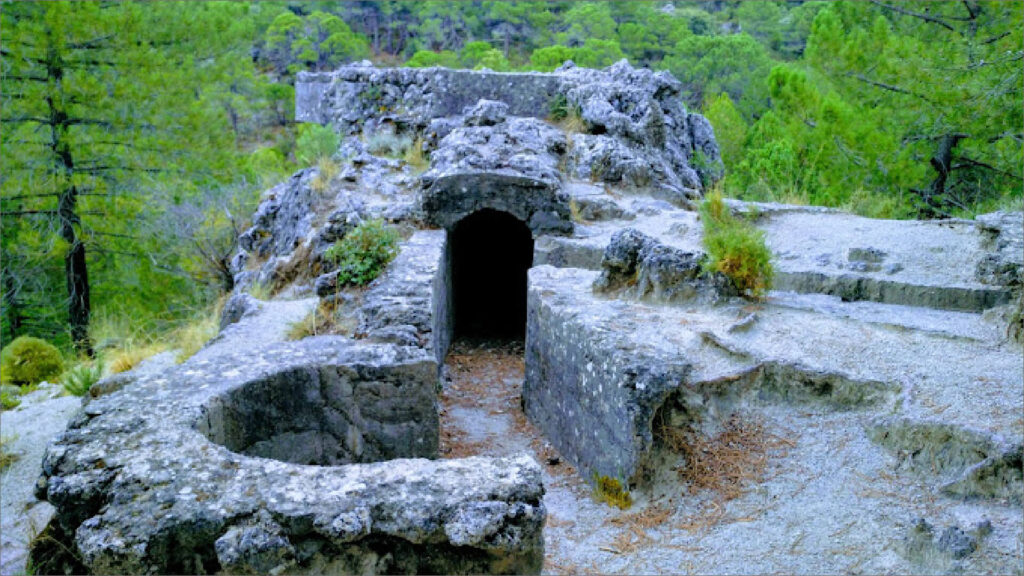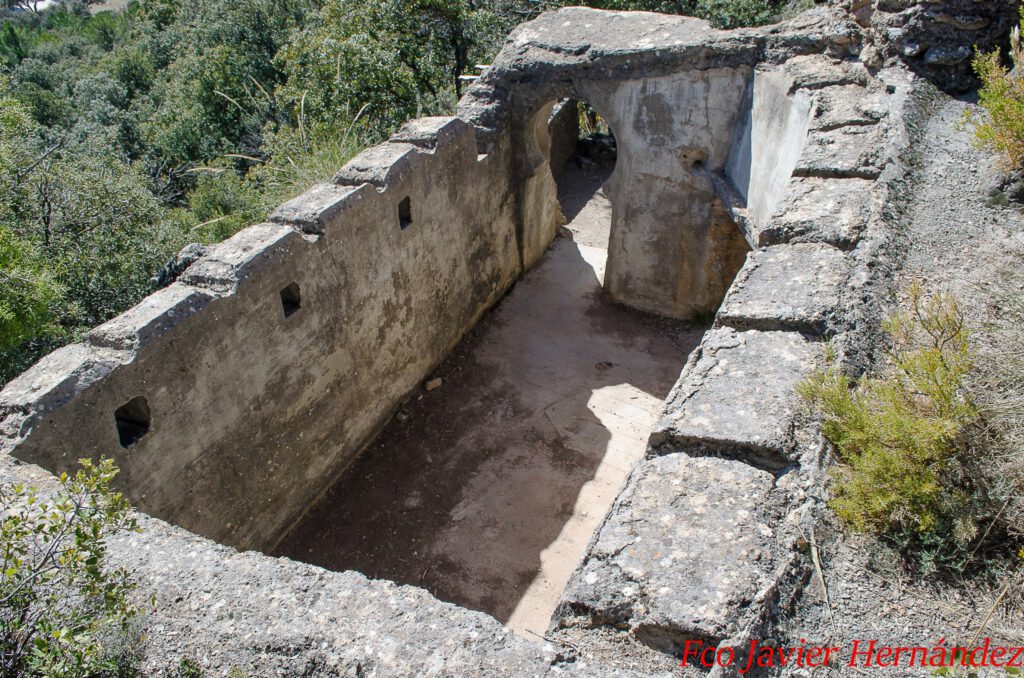
It can barely be imagined that way up high in any mountain range there could be structures that blend so well with the environment that they are almost invisible. These are the Alfaguara Trenches, structures that were forgotten about for 73 years. Tunnels, ditches, stairways and shelters that formed trenches during the Spanish Civil War; defensive and offensive structures for surveillance and control of the mountain ranges, passes and roads. They are preserved as silent witnesses to the life and death of hundreds of people during this sad period in this country’s recent history.
The remains of these structures, most of which are well-preserved, once formed an extensive network of military positions that have now become a new tourist attraction for those who enjoy discovering natural environments and their biological and historical characteristics, as reaching these sites involves exploring places with spectacular views overlooking valleys, mountains and trails. They are places that have been preserved almost as they were when they were built, thanks to the fact that they are located in hidden and difficult to access spots, in which nature has taken its course unimpeded.
The Sierra de Huétor National Park has a large network of trenches that can be visited. The Alfanevada Association, an association that promotes and implements economic development projects in the area where the National Park is located, known as the Arco Noreste de la Vega de Granada (Northeast Arc of the Vega de Granada), has developed several Civil War trench trails, some of which are of great scenic and historical interest.
Cuartel de José Antonio.
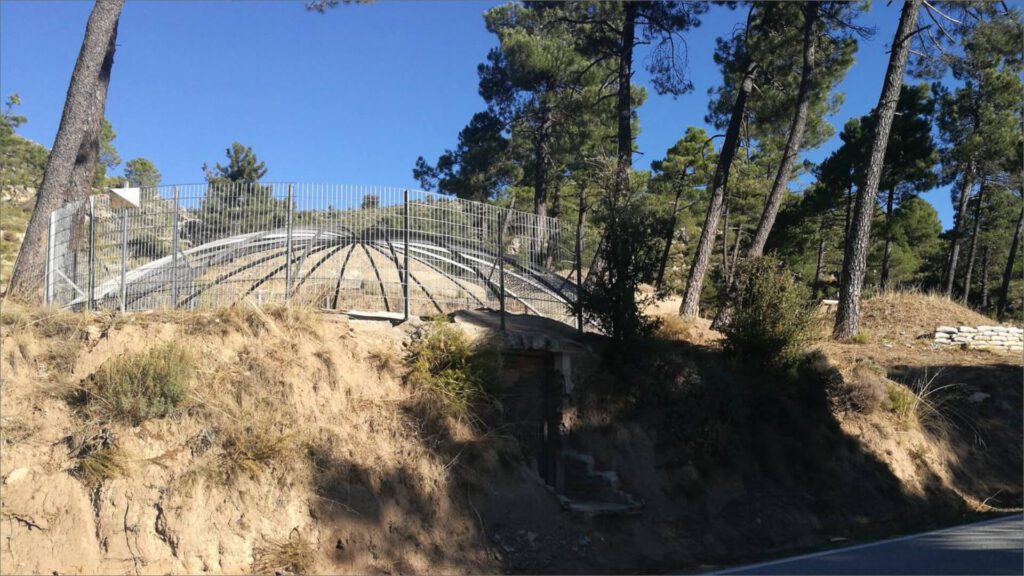
The position of the José Antonio Barracks is located on the central southern slopes of the Higuerillas. The main structures are four circular brick and concrete rooms with a hemispherical dome. At the time they were called ‘albergues circulares de montaña para pelotón‘ (circular mountain shelters for platoons). The interior contained a bench where the troops could rest. On the sides of the fortification, there is also a rectangular, half-barrel-vaulted command post with two benches and a fireplace, as well as a kitchen in the same style. Water was stored in an underground concrete tank, located very close to one of the shelters.


Trincheras de Cerro Calvero.
Trincheras de Cerro Calvero.
The Cerro Calvero Trenches are located in the Alfaguara mountain range at an altitude of 1456 metres. There, you can find various trenches, both underground and on the surface. Most of the trenches are lined with concrete casings. From this point, there are great views of the north-western part of the National Park.
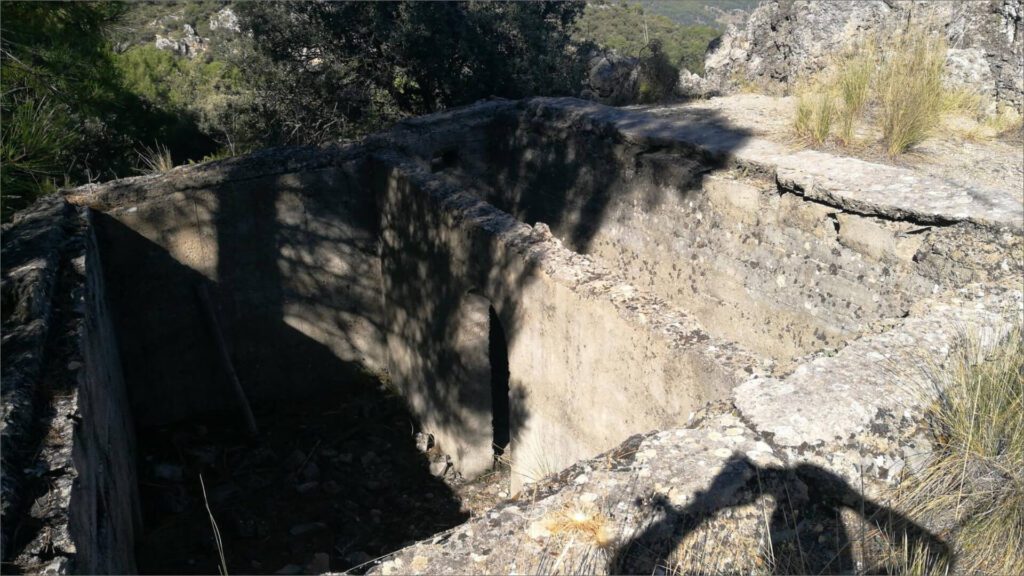
Trincheras de los Corralillos.

Their position extends over the entire Los Corralillos ridge. The summit is protected by eight observation posts, which defend the most vulnerable points. As usual, they are circular or crescent-shaped, with several surveillance openings.
Directly behind and to either side are two artillery shelters, dug out and lined with strong masonry and concrete walls. Generally, the stone is exposed to the outside in all buildings, so that the structures blend in with the natural environment. In the surrounding area, there are several natural caves and chasms, as well as a number of abandoned mines, which were fitted out to serve as a refuge or gunpowder store.
Trincheras de Alonso.
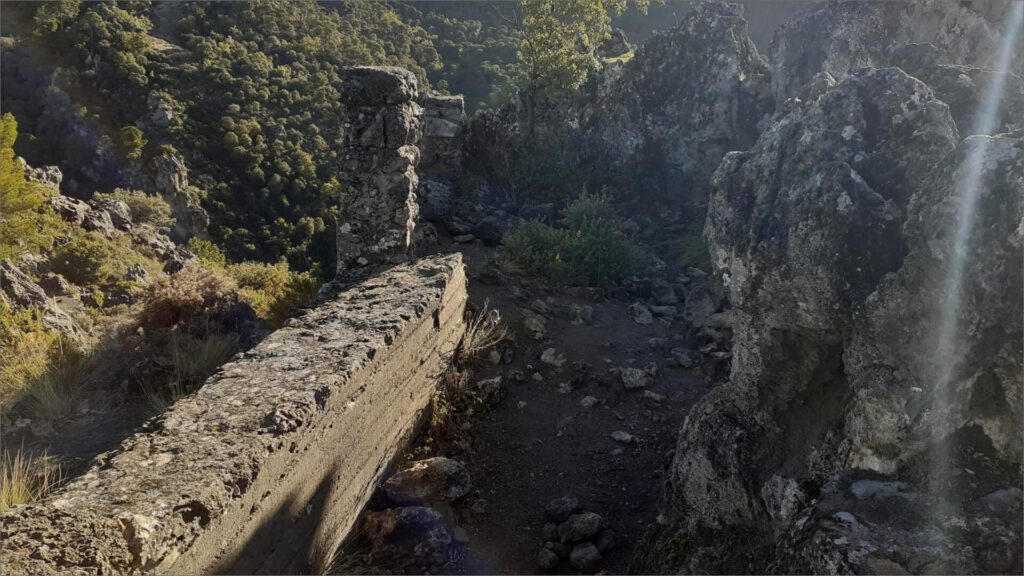
On arriving at the site, we find a trench with two concrete walls that have been slightly overturned by the passage of time and the force of the terrain. Right next to it is the entrance to a covered trench that leads to an observation post and machine-gun nest. Most of the complex can be visited via the main trench, as it leads to one of the observation posts and to a second branch, lined with concrete casings, and which in turn leads to the command post. The horseshoe arch that decorates the entrance to the enclosure and its facilities, which include a fireplace and a decorated, plastered cement floor, are particularly striking.
Avanzadilla de Nívar.
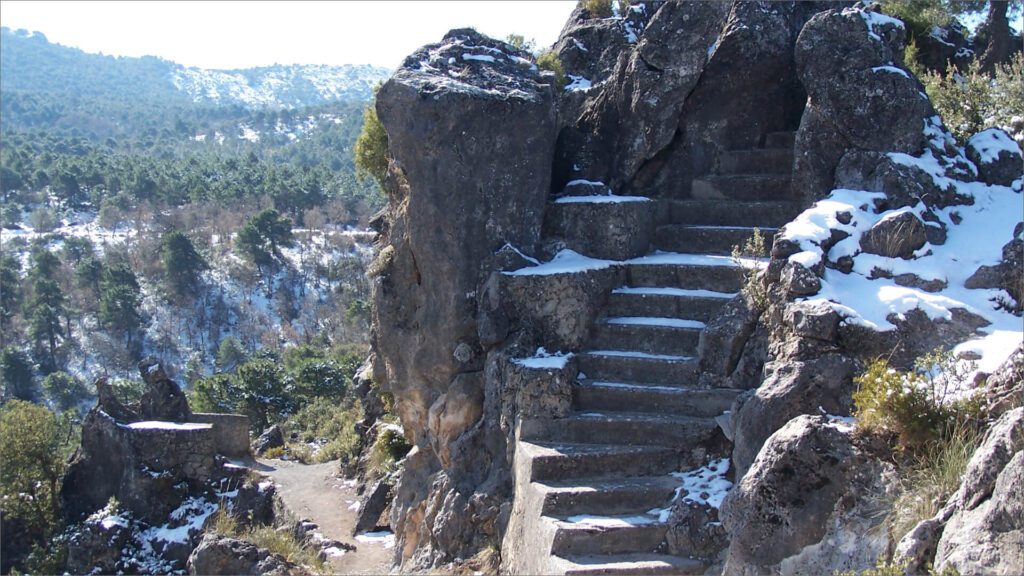
The Nívar Outpost is at the eastern end of the Cerro de la Yedra, an elongated promontory with steep drops on some of its slopes. The axis of the position is a long trench that controls all traffic. From here, there are other secondary paths that go down the southern slope of the hill, and then climb steep slopes. The most iconic of these leads to a machine-gun nest and still has a small part of the roof that once protected it. The other trenches end in shafts of different types and in the only sleeping room in the compound, which is very deteriorated due to the passage of time. The position also includes several other observation posts, which can be reached by following a narrow path along the southern slope.
Trincheras Cerro de la Encina.
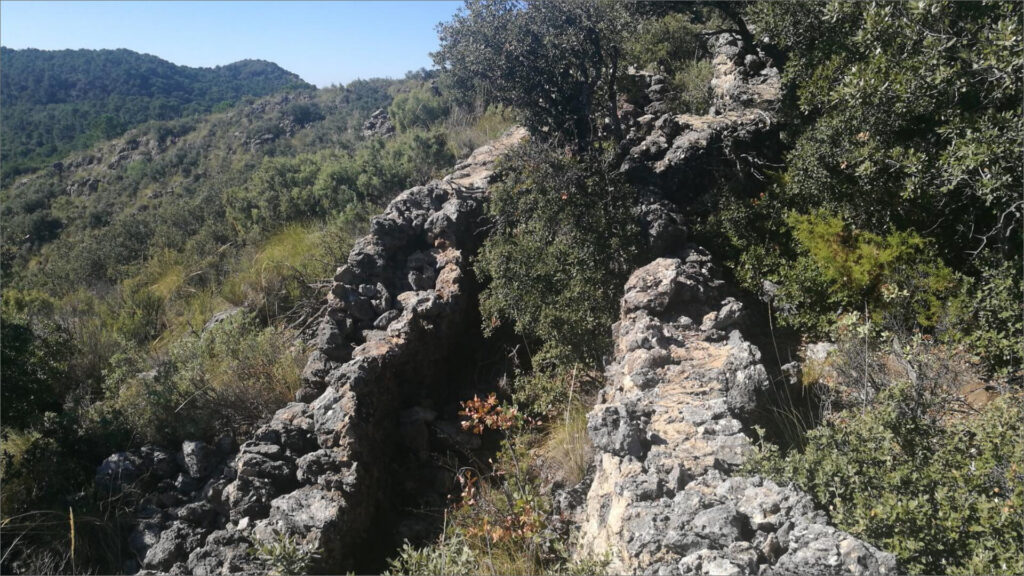
This military settlement covers a large area, although the greatest concentration of structures is to be found on the two protrusions that stand out on the hillside to the east. The trench network crosses the ridge in different directions and provides cover for a total of thirteen observation, shooting and listening posts. The living quarters were located to the west, while on the other side, a covered trench and a small underground gallery reinforced with concrete casings were excavated as a shelter. A fence encircled the entire perimeter and separated two areas within the same position.

Llanos del Fraile.
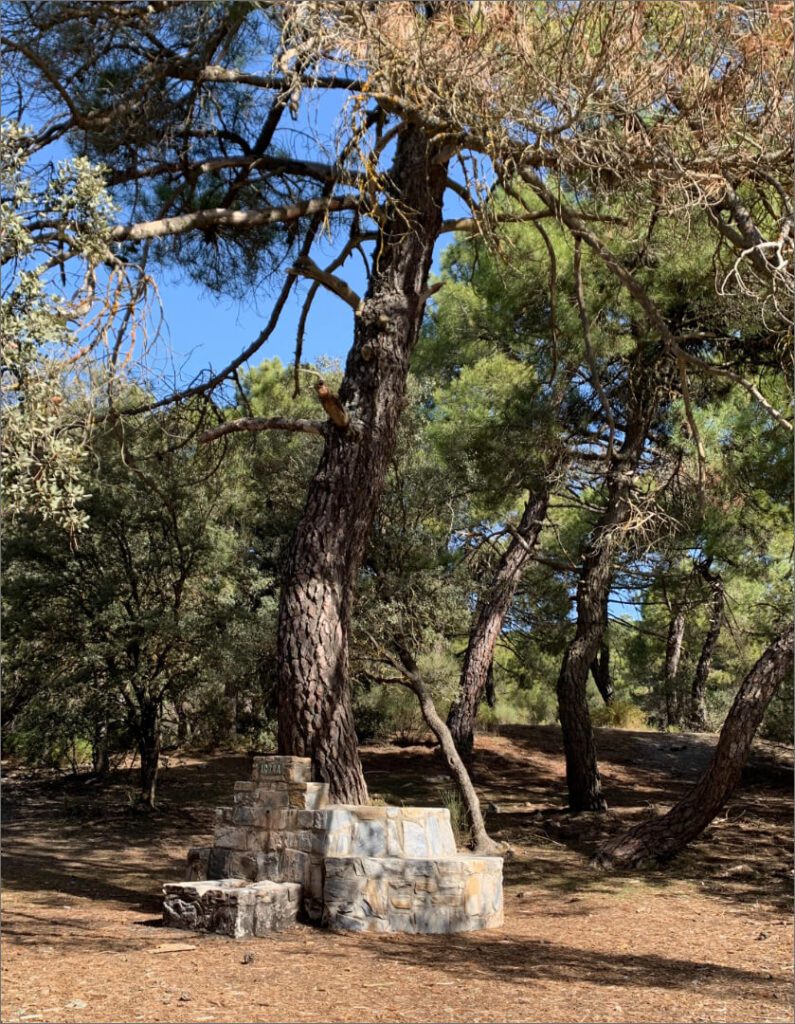
In the Llanos del Fraile, a whole network of trenches have been documented that encircle the perimeter and brought the soldiers close to numerous gun emplacements and observation, shooting and listening posts, as well as two machine gun nests that covered both ends of the front line. The most protected area was used as an artillery shelter, with two entrances and a command post with two separate spaces that can still be seen. To further defend the site, two barbed wire fences were erected to cover the two ravines on either side of the hill.
